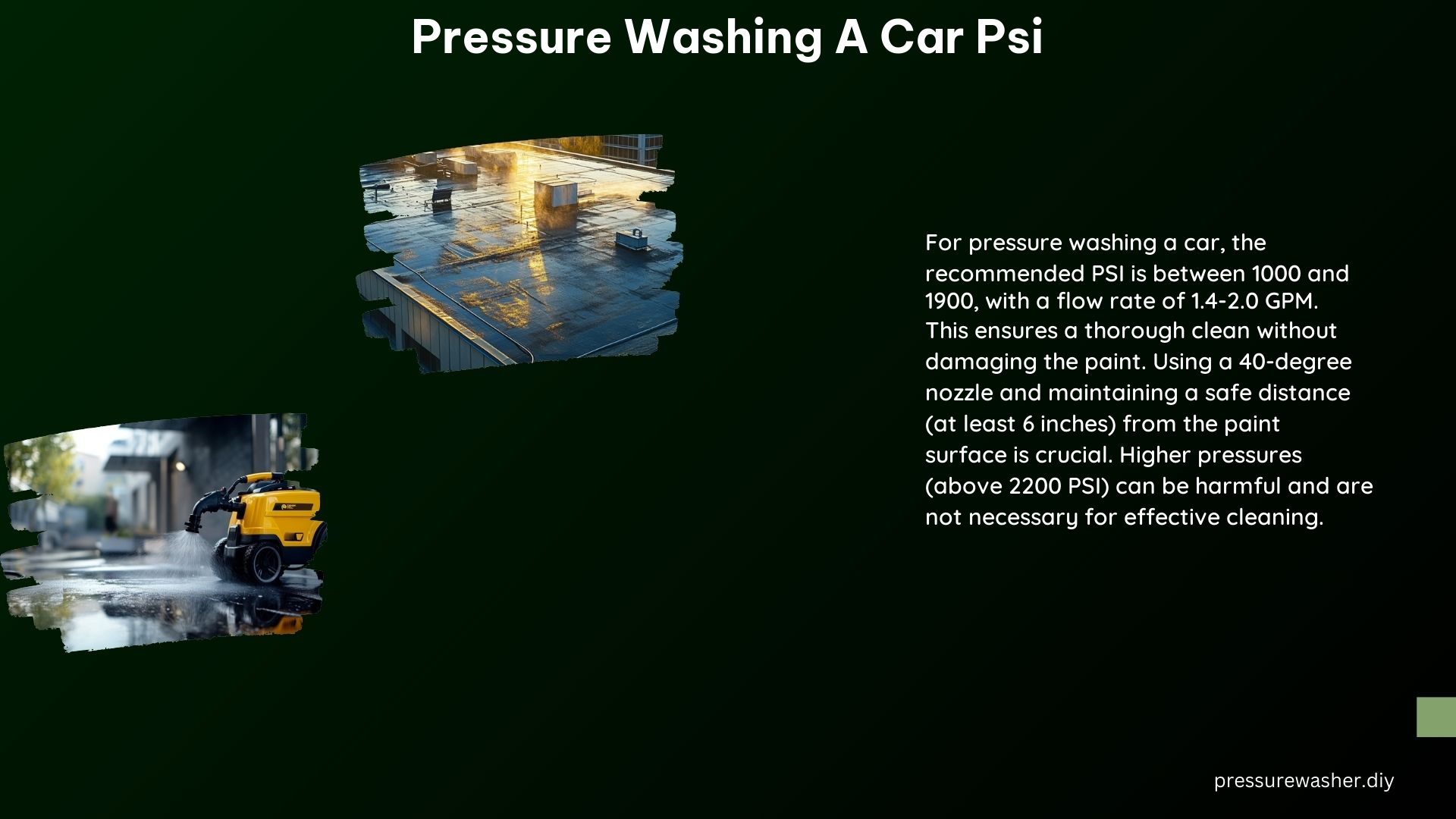Pressure washing a car is an effective way to remove dirt, grime, and other contaminants from the vehicle’s surface. However, it’s crucial to consider the appropriate PSI (pounds per square inch) to avoid damaging the paint and other delicate components. This comprehensive guide will provide you with the necessary information to ensure a safe and effective pressure washing experience for your car.
Ideal PSI Range for Car Washing
The ideal PSI range for washing a car is between 1000 and 1900 PSI. This range provides sufficient cleaning power without risking damage to the paint or other surfaces. It’s important to note that the specific PSI required may vary depending on the pressure washer model, nozzle size, and the condition of the car’s surface.
Factors Affecting PSI

Nozzle Size
The size of the nozzle used on the pressure washer can significantly impact the PSI. Larger nozzles, such as a 3.5mm nozzle, can reduce the PSI and increase the water flow (GPM) of the pressure washer. For example, a 2000 PSI pressure washer with a 3.5mm nozzle can lower the PSI to around 1000, making it more suitable for car washing.
Distance
The distance between the pressure washer nozzle and the car’s surface is also crucial. Maintaining a distance of at least 6 inches from the paint surface can help prevent damage and ensure a safe cleaning process.
Tip Angle
The angle of the pressure washer’s spray tip can also affect the PSI and the cleaning effectiveness. Wider tip angles, such as 40 degrees, are generally safer for car washing compared to narrower angles, like 25 degrees, which can concentrate the water pressure and increase the risk of damage.
Technical Specifications
GPM (Gallons Per Minute)
For effective car washing, aim for a water flow rate of 1.5 to 2.0 GPM. This range provides sufficient cleaning power without excessive water usage.
Nozzle Size
When selecting nozzles for car washing, choose ones with a minimum 25-degree spray pattern. This wider spray pattern helps distribute the water pressure more evenly across the surface, reducing the risk of damage.
Safety Precautions
Avoid High PSI
It’s essential to avoid using a pressure washer with a PSI above 2200, as this can be too strong and may damage the car’s paint or other surfaces.
Use the Right Nozzle
Select nozzles that are appropriate for the specific surface being cleaned. For example, use a 40-degree nozzle for the car’s paint and a 25-degree nozzle for the wheels.
Keep a Safe Distance
Maintain a safe distance from the car’s surface, typically at least 6 inches, to prevent damage from the high-pressure water stream.
Additional Tips
Electric Pressure Washers
Electric pressure washers are generally safer and more suitable for car washing compared to gas-powered models. They typically have lower PSI and better control, making them a more user-friendly option.
Upgrades
Consider upgrading the hose, gun/wand, and nozzles of your pressure washer to improve performance and safety. Higher-quality components can provide better control and more precise water pressure management.
By following these guidelines and considering the specific needs of your car, you can ensure a safe and effective pressure washing experience. Remember to always test the pressure washer on a small, inconspicuous area of the car before proceeding with the full cleaning process.
